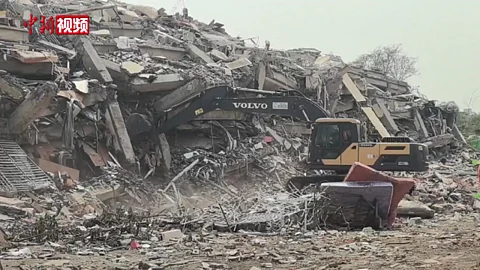

On 28 March 2025 at 12:50:52 Myanmar Standard Time (06:20:52 UTC), a Mw 7.7 (Moment magnitude scale) earthquake struck the Sagaing-Mandalay Region of Myanmar, with an epicenter close to Mandalay, the country's second-largest city. The strike-slip shock achieved a maximum Modified Mercalli intensity of IX (Violent).
The earthquake was extremely violent and one of the worst natural disasters seen in the region in decades. Thousands of people died, and the warring factions in Myanmar even agreed to a temporary ceasefire due to its severity. But what lies at the root of this event, and why was it so severe? Let's take a lesson in tectonics.
The above map Map shows the location of the Sagaing Fault region and 10 earthquakes (M > 6.5) along the fault from 1906 to 2003. The open red circles and beach balls display the proposed and the modified epicenters in a study of "Coulomb stress transfer and accumulation on the Sagaing Fault, Myanmar, over the past 110 years and its implications for seismic hazard".
The black beach balls indicate the large historical earthquakes. The black solid lines and black thick lines represent faults and ruptured segments, respectively. The grey lines are other active faults in this region. The red dashed line indicates the unruptured section on Sunda Trench. The green stars denote the cities with population more than 1 million. Shaduzup (SZs), Kamaing (KMs), and Mogang (MGs) segments are three strands on the northern Sagaing fault system . Nay Pai Taw is the new capital of Myanmar, and Yangon is the largest and highest populated city of Myanmar. Inset shows study area at regional scale.
Myanmar’s location between the Indian and Eurasian tectonic plates makes it highly susceptible to earthquakes. The boundary between these plates, known as the Saigon Fault, is a significant source of seismic activity. This fault runs in a straight line from north to south for approximately 1,200 kilometers (745 miles), passing through major cities like Mandalay and Yangon, thereby putting millions of people at risk. According to the USGS, the earthquake in Myanmar was caused by "strike-slip faulting," a result of the friction between the Indian and Eurasian plates as they grind past each other. This type of faulting occurs when two plates slide horizontally against one another, releasing immense energy that can trigger powerful earthquakes.
Dr. Rebecca Bell, a tectonics expert at Imperial College London, compared the Saigon Fault to California’s infamous San Andreas Fault, which caused the devastating Northridge earthquake in Los Angeles in 1994. She explained that the long and straight nature of faults like these allows ruptures to extend over vast areas during an earthquake. The larger the area affected by the rupture, the more powerful the earthquake can be. In Myanmar, this means that seismic events along the Saigon Fault have the potential to impact widespread regions, causing significant damage and posing serious risks to populated areas situated along the fault line.
According to the USGS ShakeMap, the epicenter was just west of Mandalay, marked by extreme shaking (Intensity X+ on the Mercalli scale) and very heavy damage in the immediate area. The quake caused severe to violent shaking (Intensity VIII–IX) along a north-south rupture zone extending from Mandalay down through Nay Pyi Taw, with shaking classified as "very strong" (Intensity VII) reaching as far south as Pyay and Taungoo.
Moderate to strong shaking (Intensity V–VI) extended further into central and southern Myanmar, affecting cities such as Yangon and Bago. Light shaking (Intensity III–IV) was detected across wide areas, reaching into neighboring countries including northern Thailand, Laos, and parts of Bangladesh and India. Notably, Bangkok, located over a thousand kilometers from the epicenter, still reported strongly felt shaking (Intensity III–IV), a testament to the quake’s immense energy and regional impact. The map also shows seismic instruments recorded ground accelerations and velocities confirming the wide area of influence.
The earthquake’s devastating impact has left an indelible mark across Myanmar, with the loss of life currently around 4,000 people, a tragic reminder of vulnerability to such seismic events.